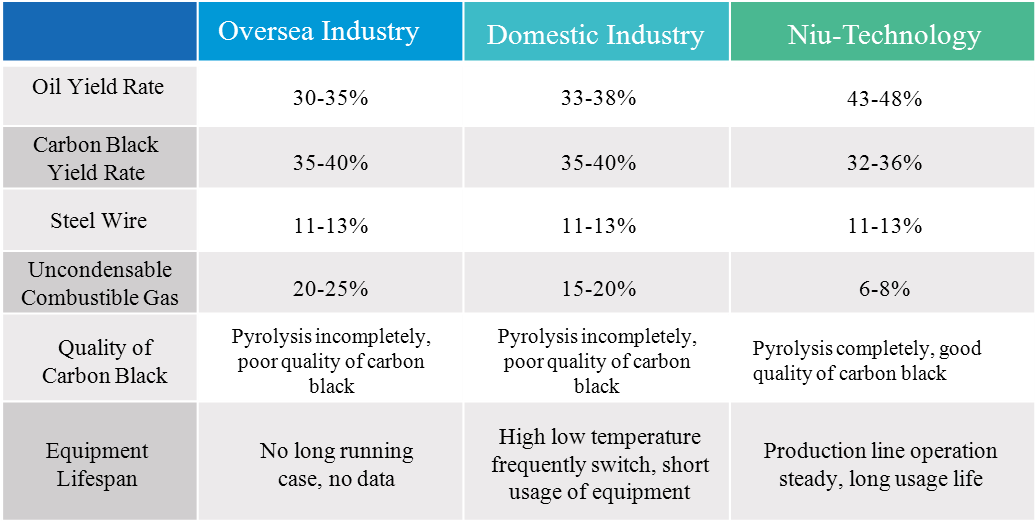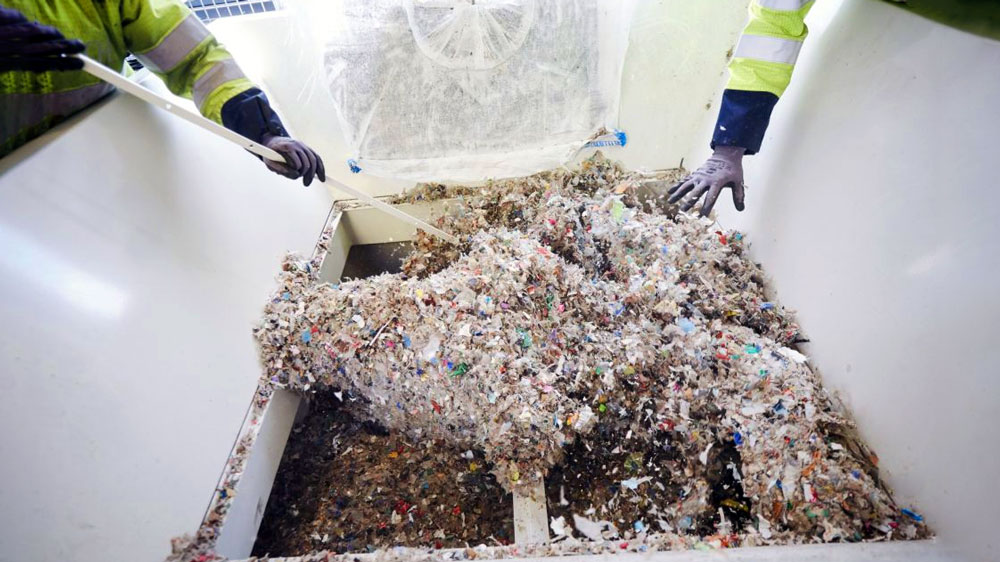There and back again: Turning plastic back into oil
What is one of the things that the world never seems to run out of? Just take a look around the house, or sadly around our oceans and you’ll find it pretty quickly: it’s plastic. We have plastic and the resulting plastic waste and residue in abundance, all around us. But did you know that it’s made from oil? Why wouldn’t we take that oil back once we are done with the plastic? It may sound silly but it definitely isn’t. And, wouldn’t you know it, there are actually solutions. The answer to our problems may lie in that bin down the road.
This was of course an oversimplification. Things are more complicated but there are people willing to have them make sense. One such company is OMV and they are coming forward with their ReOil solution. Basically, what they are about is drawing attention that every day we ignore useful sources of fuel just by throwing it away! According to their estimations, every EU citizen uses about 200 plastic bags per year and 700 kg of plastic waste ends up in our oceans every second. Crunch these numbers with the fact that it takes between ten to 20 years for a small plastic wrapping to biodegrade and you have a recipe for disaster.
But OMV, or to be more precise Wolfgang Hofer, who is Senior Expert New Technology, explains that there are ways to recycle and turn that bothersome wrapper back into oil. Their ReOil technology presupposes that plastic is heated to over 400°C, a process which breaks down the long-chain molecules thus producing synthetic crude oil, but heating the plastic that much is a lot more difficult than it may sound. This tough nut was finally cracked by Hofer as he had a revelation in 2010. According to him “It would be better if we could convert old plastic into synthetic oil and use this resource either for producing new plastics or as energy for mobility. That would give us a circular economy for plastics, similar to paper.”[1]
The solution was actually a solvent which was introduced in the first test facility in the technology center set up in the Schwechat Refinery. This solvent tackled two issues at the same time as the engineer explains: “This solvent is part of a cycle in the unit, meaning that it’s already hot. It is mixed with the plastic right at the start of the process, supporting the heating stage and reducing the energy needed thanks to better heat conductivity. What’s more, pure plastic would be too tough to transport through pipes. Adding the solvent also enables us to address this problem.”[2]
The next step simply implies that the melted mass is transformed into gas, as the long chains of molecules are broken down. The crude oil is then recovered with the help of subsequent chemical processes which reassemble the aforementioned molecules into smaller chains. The method was so fruitful that it begged for more investments. A bigger and better ReOil plant went online at the start of 2018 with 20 times the capacity of the previous one. Michael Fadler, Department Manager ReOil 100, responsible for the operations had this to say about the process: “The quality of the products from the ReOil process was already outstanding with the unit in the technology center and that’s something that hasn’t changed. At the end of this we get such a pure, high-quality product that it can hold its own against the best crude. That’s why the new, larger unit is also directly incorporated into the refinery. What we produce here will be used in the production of fuels and other refinery products.”[3] This new unit can process up to 100 kg of plastic per hour and yields 100 liters of crude from 100 kg of waste.
However, it does not stop here, as Michael Fadler’s task comprises that the new ReOil unit be available for production 24/7, a development which is currently stunted by interaction between individual aggregates. Once this will be overcome, and Fadler assures us it will, the next step envisions the next unit being capable of processing 2000 kg of used plastic per hour.
China is also involved with this technology as the Niutech Environment Technology Corporation (Jinan Eco-Energy Technology Co., Ltd) have developed two ways of handling waste: Industrial Continuous Scrap Tyre Pyrolysis Production Line which of course handles the transformation of tires into oil and the Industrial Continuous Waste Plastic Pyrolysis Production Line which as the name implies, handles plastic. This process is operated through low temperature catalytic pyrolysis in safe, environmentally friendly and highly efficient preconditions. This concept plant has already been commercialized in Germany, Estonia, Thailand, Taiwan, Malaysia and other countries.
According to the Niutech Environment Technology Corporation, their patented technology improves the oil yield rate and quality as well as the operating conditions which in turn prolongs the life time of the equipment. What’s more, the technology is pretty self-sufficient as the resulting combustible gas can be used as the fuel for the heating system. Furthermore, all the indexes of the emission conform to the EEA standard of the EU and APA standard in the US. Please find the complete specifics of the operation as follows: http://www.niutechenergy.com/featured-products/recycled-plastic-industrial-continuous-pyrolysis-machine.html

Canadian company Plastic2Oil also comes with some interesting additions in the field. Self-described as a clean energy company, their goal is to offer technology that converts plastic waste into liquid fuels and dirty fuel into clean diesel. Regarding their pending patent Plastic2Oil® (P2O), they claim to completely change the landscape in what pertains to waste management and also creation of green employment opportunities. According to them: “Plastic2Oil’s patent pending P2O process transforms unsorted, unwashed waste plastic into ultra-clean, ultra-low sulphur fuel without the need for refinement.”[4]
Having received validation from IsleChem (process engineering) and Conestoga-Rovers & Associates (emissions stack test) and permits to operate by the New York State Department of Environmental Conservation (NYSDEC) and others they are just about ready to go. Boasting interesting figures like a conversation rate of 86% of waste plastic into fuel, approximately 1 gallon of fuel is extracted from 8.3 lbs. of plastic. Minimal energy is required to run the machine as the processor uses its own off-gases as fuel. As water is used for cooling only, it is in no way contaminated. No. 2 Fuel (Diesel, Petroleum Distillate), No. 6 Fuel, Naphtha, Petcoke (Carbon Black), and Off-Gases are all produced from a single processor.
Evidence that this trend has been on the upturn for quite a while is the England based company Recycling Technologies. The company has produced the RT7000, a refinery machine able to produce three types of oil and wax, with the process based on a variation of thermal cracking. They clean the plastic first and then familiarly heat it up using what they call ‘hot sand-like particles’[5]. The resulting oil is called ‘Plaxx’ and the output is 5200 tons per 7000 tons of plastic. The product could be used by petrochemical companies, ship engines or as wax. Measuring a tennis court, the machine costs USD 3.8 million to install and then a further USD 647,000 a year to run. However, RT claims each machine pays for itself within three years as it produces revenue of USD 2.2 million. Based on these numbers, CEO Adrian Griffiths envisions 100 machines operational under lease by 2025.
As you can see, the business of converting plastic into oil is not really a new concept. What would be new is us finally embracing the ever-present concept of recycling and its inherent importance. Next time you throw something in the garbage pile think about what could be produced from it. This might not change the world in the blink of an eye but it may very well change our perspective on it. And that for now should be enough.
[1] https://blog.omv.com/en/reoil-getting-crude-oil-back-out-of-plastic/
[2] https://blog.omv.com/en/reoil-getting-crude-oil-back-out-of-plastic/
[3] https://blog.omv.com/en/reoil-getting-crude-oil-back-out-of-plastic/






